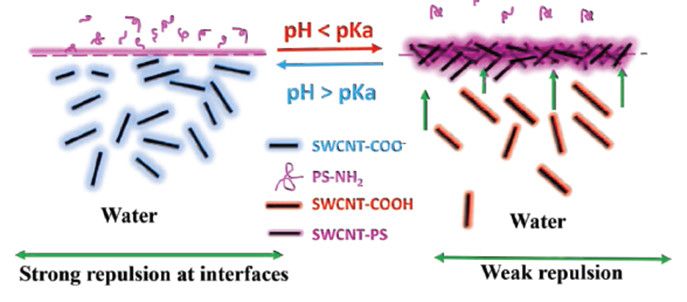EPJ E Colloquium: nanoparticles, nanorods and nanosheets at fluid interfaces
- Details
- Published on 30 May 2016

In this EPJ E Review, Toor, Feng and Russel present many examples of self-assembly of nanoscale materials (both synthetic and biological) such as nanoparticles, nanorods and nanosheets at liquid/liquid interfaces. For biological nanoparticles, the nanoparticle assembly at fluid interfaces provide a simple route for directing nanoparticles into 2-D or 3-D constructs with hierarchical ordering.
The interfacial assembly of single-walled carbon nanotubes (SWCNTs) at liquid interfaces would play a key role in applications such as nanotube fractionation, flexible electronic thin-film fabrication and synthesis of porous SWCNT/polymer composites foams. Liquids can be structured by the jamming of nanoparticle surfactants at fluid interfaces. By controlling the interfacial packing of nanoparticle surfactants using external triggers, a new class of materials can be generated that combines the desirable characteristics of fluids such as rapid transport of energy carriers with the structural stability of a solid.
Among the many areas that remain to be explored the authors identify as the most exciting in-situ characterization and control of thin-film morphology and studies of thin-films mechanical properties through cutting-edge techniques in interfacial rheology.
Anju Toor, Tao Feng, and Thomas P. Russell (2016),
Self-assembly of nanomaterials at fluid interfaces,
European Physical Journal E, DOI 10.1140/epje/i2016-16057-x





